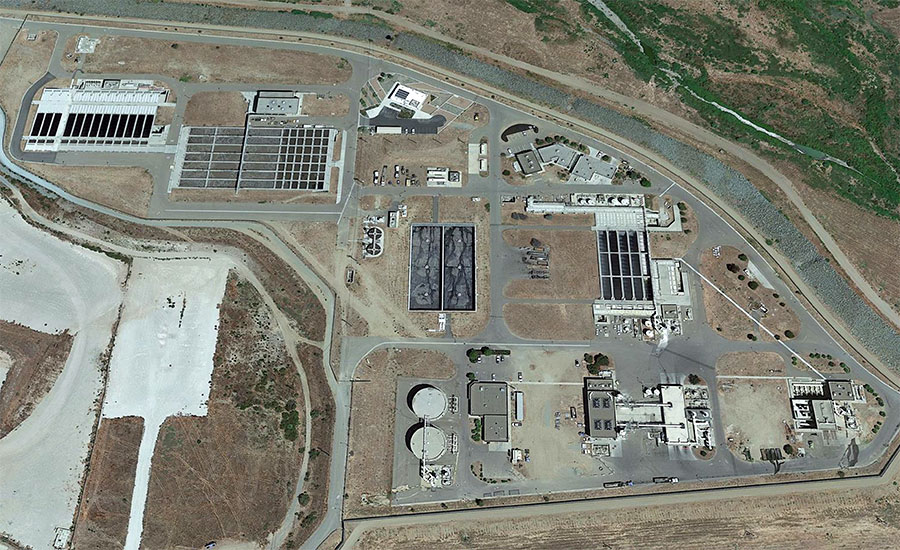The U.S. section of International Boundary and Water Commission has agreed to more tests of water, sediment and trash samples in the Tijuana River and adjacent canyons along the U.S.-Mexico border to determine effects of decades of transboundary raw sewage flows into the U.S. side of the river valley and, eventually, the Pacific Ocean—awarding a five-year, $1.9 million contract to EGC-AGEISS, a San Antonio environmental engineering joint venture.
The sampling program was developed with input from the regulatory community and the Minute 320 water quality workgroup created by the U.S.-Mexico border management agency to address ongoing problems with sewage overflows. It said the testing program will characterize transboundary flows and develop an ongoing warehouse of water quality and sediment data to plan future projects to mitigate the pollution effects and make safety recommendations to residents and landowners.
“I’m glad to see the [commission] implement long-overdue water quality testing in the Tijuana River Valley. This environmental and public health disaster has gone on far too long." said U.S. Rep. Mike Levin, a Democrat who represents the nearby beachfront community of Oceanside, Calif. "The information collected from these tests will provide a more detailed understanding of the issues plaguing the Tijuana River Valley, help track progress on cleanup efforts and help us advocate for more federal resources."
The commission also said the study will satisfy the requirement to develop and implement a Tijuana River Valley monitoring program as outlined in a regional water quality permit issued for the South Bay International Wastewater Treatment Plant in San Diego that the commission operates.
The monitoring program is part of the agency's commitment to the regional regulator under a 2023 order, said Commissioner Maria-Elena Giner. “Combined with $31 million in repairs at the plant, the $600-million expansion we will soon start, our monitoring of Mexico’s commitment to Minute 328 projects, and taking urgent actions to ensure zero transboundary flows during the dry season, the IBWC is taking concrete steps towards pollution prevention in the South Bay aream," she said.
But local leaders are taking parallel actions that include personnel from the federal Centers for Disease Control and Prevention interviewing local residents about ailments experienced such as headaches or sickness as a result of raw sewage flows that kept beaches in communities such as Imperial Beach closed for more than 1,000 days. San Diego County and the Centers are partnering to complete the public health emergency survey. It involves interviews done from Oct. 17-19 with occupants of 210 randomly selected households chosen from a bigger 30-block sample of homes, said Fernanda Lopez Halverson, a county spokeswoman.
A state of emergency declared by the county Board of Supervisors in May remains in effect. At a recent elections-related public forum, County Superintendent Nora Vargas said evacuating the entire Tijuana River Valley could eventually be necessary because of the sewage flows. “We’re not at that point right now, but I want to make sure that we’re ready if and when it were ever to happen,” she said during a panel on whether the government could fix the sewage crisis.
More Litigation
Meanwhile, Imperial Beach residents on Oct. 15 filed a second class-action lawsuit against Veolia Water Inc., a commission-contracted engineering consultant to the South Bay plant, and its parent, engineer Veolia North America.
"The residents of Imperial Beach have been suffering the consequences of polluted water for far too long. This lawsuit aims to secure justice for the community and hold those responsible accountable for their reckless disregard of public health and environmental safety," said Brett Schreiber, a partner at law firm Singleton Schreiber that represents the residents. "This is not just an environmental issue, but a public health emergency. Families here have been exposed to dangerous chemicals for years without adequate action from the responsible parties."
The cities of Imperial Beach and Chula Vista, with the San Diego Port Commission, previously sued Veolia and the border commission for civil penalties, and another group of Imperial Beach residents filed a similar class action against Veolia on Sept. 9. Both firms representing the residents said they would add the border commission as a defendant in their suits after a waiting period expires to take legal action against a federal agency.
"We are currently reviewing this complaint but can already state that these allegations are meritless," said Adam Lisberg, Veolia North America senior vice president of communications for municipal water, in a statement. The firm "has done its best to help operate the South Bay International Wastewater Treatment Plant in the face of increasingly challenging circumstances. The overwhelming cause of the odors and pollution affecting Imperial Beach is the excessive and uncontrolled sewage flows from Tijuana, much of which never even enters the ... plant."
Lisberg added that the population of Tijuana has grown nearly 30% In the last 15 years and infrastructure in the city has not kept pace. Veolia North America said the plant was not built to endure such conditions, with its capacity and performance overwhelmed by uncontrolled wastewater flows and damage from mud and debris.
"This situation needs to be improved with stronger cross-border collaboration and holistic problem-solving at the local, state and federal levels," he said.




